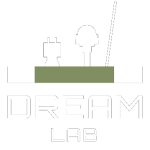Machine Learning for Predictive Control
Developing aerial robotic in the Greater Region (The Greater Region is an european regional cooperation) is the focus of the GRoNe project (http://interreg-grone.eu). This work is done under the Grande Region rObotique aerienNE (GRoNe) project, funded by a European Union Grant thought the FEDER INTERREG VA initiative. The grant is received by the Metz campus of CentraleSupelec and the DREAM lab is only involved through the co-supervision of PhD student Antoine Mahé.
As part of this initiative we intend to improve autonomous drone navigation by combining machine learning and model predictive control.
The use of Unmanned Aerial Vehicles (UAV) for various inspection tasks is more and more appealing. Tasks such as precision agriculture or building inspection are benefiting greatly of the improvement of aerial robotic capabilities.
In order to improve current autonomy capabilities of drones it is interesting to look at the possibilities of combining control theory and new machine learning technique. Such combination as been done using of model predictive control with neural network. Studying the complementarity between theses different methods and how to combine them is a focus of our work.
One problem that arise when doing machine learning on complex system is the difficulty to acquire data. We are working on a solution to alleviate that cost, by prioritizing sample in the dataset according to their learning value.




Work realised by Antoine Mahé.

© 2019 – 2023 DREAM Lab – Georgia Tech